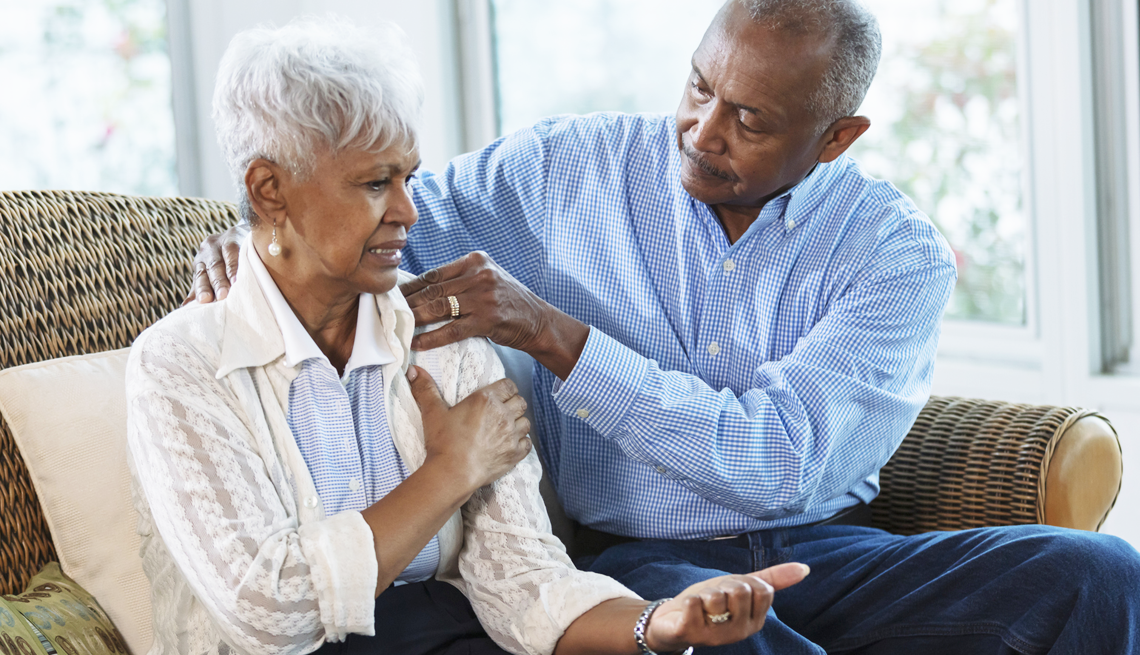Stiff knees, achy hips, and swollen hands? If you’re 50 or older, it could be osteoarthritis—a common wear-and-tear disease that happens when the cushion-like tissue between the bones breaks down over time, leading to joint pain.
More than 32.5 million U.S. adults have osteoarthritis, and most of them are older adults. While there’s no way to cure or reverse the disorder, there are tried-and-true ways to prevent it or keep it from getting worse.
Here are five ways to take care of your joints after 50.

1. Stay physically active
It may sound counterintuitive to put more stress and strain on the body, but regular exercise is one of the best ways to treat osteoarthritis and preserve joint health.
One reason: Exercise strengthens the muscles around the joints, helping to take pressure off them. It can also improve the flow of nutrients to the cartilage, explains Eric Hume, M.D., associate professor of clinical orthopedic surgery.
Dr. Hume emphasizes, “The cartilage doesn’t get nutrition the normal way. Instead, it’s dependent on repetitive motion.” So, the low-impact repetition of exercise actually has a protective effect on the knee. Biking, swimming, and walking are excellent low-impact activities. Range-of-motion exercises like yoga and tai chi are also beneficial.
2. Maintain a healthy weight
More than 40 percent of older adults in the U.S. struggle with obesity. Extra weight puts additional stress on weight-bearing joints like the knees and hips.
Dr. Hume explains, “If you have normal-sized tires—representing the cushiony cartilage between the bones—but you’re carrying twice the body weight the knees are designed for, the wear is going to be more severe.” Losing even a small amount of weight can alleviate significant pressure from your joints.
On the flip side, being underweight can pose challenges too. Lack of muscle development means the cartilage takes on more force than it should. This highlights the importance of balanced muscle strength and flexibility to distribute impact across the body effectively.
3. Clean up your diet
Eating well is crucial for joint health. Dr. Hume suggests focusing on portion control and a balanced diet rich in proteins. The Mediterranean diet, full of fruits, vegetables, grains, and healthy fats, can be particularly beneficial for people with osteoarthritis.
Supplements like glucosamine and chondroitin are often marketed for joint pain, but their effectiveness is inconclusive. Always consult with your doctor before taking any supplements, as some can interact with medications or cause side effects.
4. Stay hydrated
If you’re dehydrated, your body will siphon water from other sources, including the cartilage, which is mostly water. This lessens its lubrication and can lead to joint pain. Keeping hydrated is one of the best ways to maintain healthy cartilage.
Drinking plenty of water helps flush inflammatory toxins out of the body and keeps other tissues like tendons, ligaments, and muscles well-hydrated, reducing the potential for injury.
5. Manage your pain
When joint pain strikes, you don’t have to suffer through it. There are ways to alleviate the aches. First, try to understand what triggered the pain. Was it because you tried something new or pushed too hard?
Sometimes, applying ice after exercise and using a compression sleeve can help. Over-the-counter anti-inflammatories like ibuprofen and pain relievers like acetaminophen can also provide relief. Always consult with your pharmacist or healthcare provider to determine which option is best for you, considering potential risks and side effects.
For persistent pain, topical pain relievers might work for you and come with fewer side effects. If the pain is severe, corticosteroid or viscosupplement injections might be recommended, and as a last resort, partial or total joint-replacement surgery may be considered.
Being patient is important. While you may not be able to relive your glory years of when you were 20 or 30, with the right preparation and realistic expectations, your future can still be filled with enjoyable activities.
Other Causes of Joint Pain
Joint pain can be a symptom of several other conditions, so it’s always a good idea to consult a healthcare provider for a proper diagnosis.
Staying informed and taking proactive steps can help manage and minimize joint pain, making your later years more comfortable and active.

Remember, consult your healthcare provider for personalized advice that’s right for your situation. Together, you can find the best path to joint health and an active, pain-free life.




